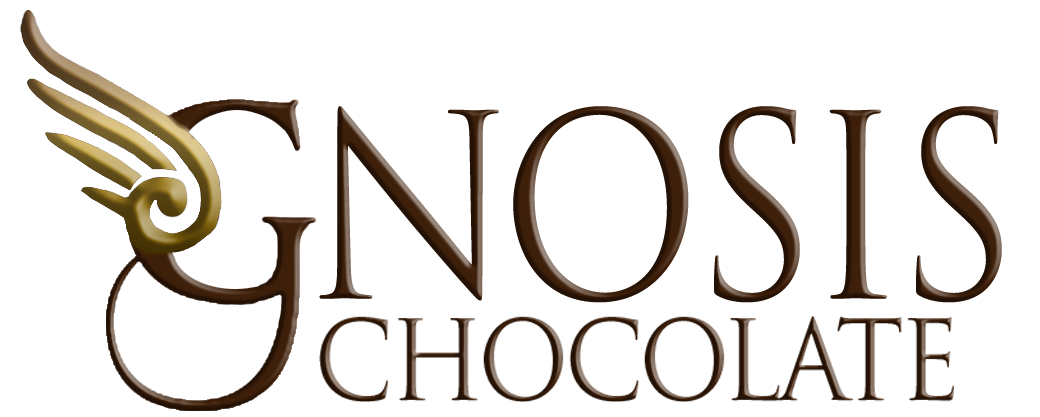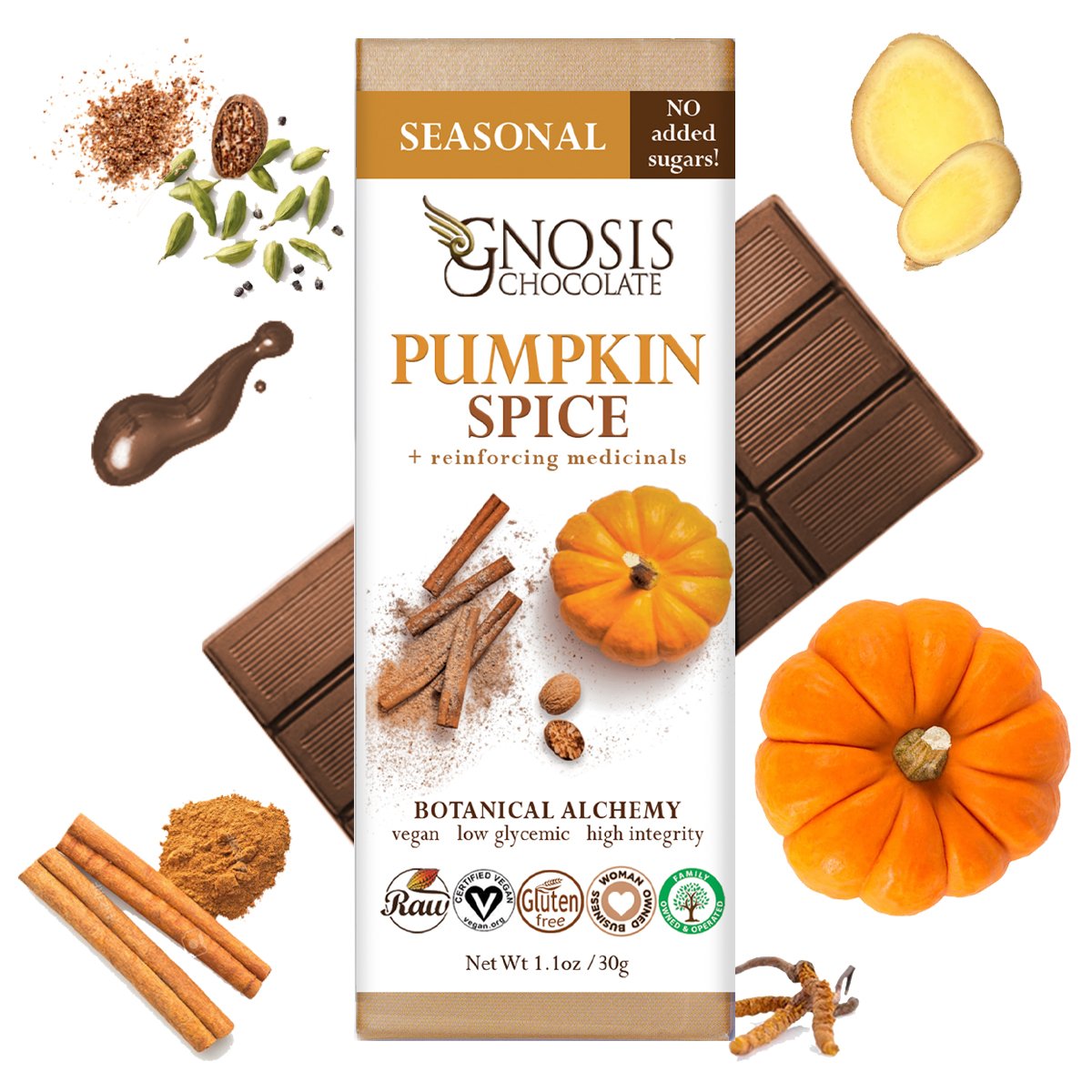INGREDIENT FEATURE: PS Alchemy
The Alchemy of Pumpkin Spice
But while many feel their blood type may at this point be PS+ with all the pumpkin spice they’re consuming - and others may simply roll their eyes at the concept because they’ve been so heavily marketed to with the pumpkin spice-this, and pumpkin spice-that… might we ask you to give this American tradition another look?
We ask you to pause and ask yourselves… what IS pumpkin spice? Upon closer inspection… we might even travel to India to find the Ayurvedic truth to the magic of pumpkin spice!
If we’re talking about those “natural flavorings” in pumpkin spice lattes and muffins (and chips and salsa - gosh they put it in everything), then YES - Pumpkin Spice is simply Fall marketing! But if your pumpkin spice is authentically made from pumpkin and spices, as ours is, well then... Pumpkin Spice is actually a seasonal alchemical blend. It’s actually magic.
Pumpkin Spice, dear friends, is a combination of the glorious seasonal gift from Mother Nature - the pumpkin - so nutrient-rich and versatile it’s used in everything from pie to soup, and a collection of precious Spices - also known asmedicinal herbs! As we season our cooking, rarely do we pause to reflect on the fact that cooking spices, just like ginseng and maca and gingko biloba, do in fact all have medicinal properties as well! Ginger, cinnamon, cloves, nutmeg… all the components of the blend we know as Pumpkin Spice have their individual properties - all backed by science.
So, rather than groaning at the flavor profile we have been inundated with, let’s embrace Pumpkin Spice for the medicinal alchemy it truly is!
OUR Pumpkin Spice is not only made of fastidiously sourced organic spices from around the world, and contains REAL organic pumpkin, and zero processed ingredients. We sweeten using the maply goodness of coconut sugar. And to an already potent powerhouse blend of ginger, cinnamon, nutmeg, and cloves, we ALSO add turmeric and a slight crackle of black pepper (increases absorption of turmeric's curcumin!)
Pumpkin Spice and everything nice multiplies your health, vitality, and immunity at least thrice!
(Ok, now you can roll your eyes.)
Pumpkin the qualities and uses of this delightful gourd are so vast we believe it deserving of its own blog!
CINNAMON People have used cinnamon since 2000 BC in Ancient Egypt, where they regarded it highly. In medieval times, doctors used it to treat conditions such as coughing, arthritis, and sore throats. It is now the second most popular spice, after black pepper, in the United States and Europe. A 2019 meta-analysis of 16 randomized control trials with patients with type 2 diabetes or pre-diabetes identified that cinnamon reduced fasting blood glucose (though not HgA1C A). Journal of Food Science study found that cinnamon could help in the regulation of intestinal microbiota, and acts as a prebiotic, promoting the growth of beneficial bacteria in the gut. Columbia University researchers found cinnamon to help manage symptoms of polycystic ovary syndrome. Specifically, cinnamon may improve insulin resistance, hence restoring a regular menstrual cycle.
GINGER is one of the most commonly consumed dietary condiments in the world (Surh et al. 1999). The oleoresin (i.e., oily resin) from the rhizomes (i.e., roots) of ginger contains many bioactive components, such as [6]-gingerol (1-[4′-hydroxy-3′- methoxyphenyl]-5-hydroxy-3-decanone; Figure 7.1), which is the primary pungent ingredient that is believed to exert a variety of remarkable pharmacological and physiological activities. Ginger is a member of a plant family that includes cardamom and turmeric. Its spicy aroma is mainly due to presence of ketones, especially the gingerols, which appear to be the primary component of ginger studied in much of the health-related scientific research. The rhizome, which is the horizontal stem from which the roots grow, is the main portion of ginger that is consumed. Ginger’s current name comes from the Middle English gingivere, but this spice dates back over 3000 years to the Sanskrit word srngaveram, meaning “horn root,” based on its appearance. In Greek, it was called ziggiberis, and in Latin, zinziberi. Interestingly, ginger does not grow in the wild and its actual origins are uncertain. Indians and Chinese are believed to have produced ginger as a tonic root for over 5000 years to treat many ailments, and this plant is now cultivated throughout the humid tropics, with India being the largest producer. Ginger was used as a flavoring agent long before history was formally recorded. It was an exceedingly important article of trade and was exported from India to the Roman Empire over 2000 years ago, where it was especially valued for its medicinal properties. Ginger continued to be a highly sought after commodity in Europe even after the fall of the Roman Empire, with Arab merchants controlling the trade in ginger and other spices for centuries. In the thirteenth and fourteenth centuries, the value of a pound of ginger was equivalent to the cost of a sheep. By medieval times, it was being imported in preserved form to be used in sweets. Queen Elizabeth I of England is credited with the invention of the gingerbread man, which became a popular Christmas treat.The medicinal, chemical, and pharmacological properties of ginger have been extensively reviewed (Surh, Lee, and Lee 1998; Ernst and Pittler 2000; Afzal et al. 2001; Bode and Dong 2004; Boone and Shields 2005; Borrelli et al. 2005; Chrubasik and Pittler 2005; Chrubasik, Pittler, and Roufogalis 2005; Grzanna, Lindmark, and Frondoza 2005; Thompson and Potter 2006; Eliopoulos 2007; Shukla and Singh 2007; White 2007; Ali et al. 2008; Nicoll and Henein 2009). Over the last few years, interest in ginger or its various components as valid preventive or therapeutic agents has increased markedly, and scientific studies focusing on verification of ginger’s pharmacological and physiological actions have likewise increased (Ali et al. 2008).
NUTMEG has a special place in Chocolate Girl’s heart - as it provides income to approximately 30 per cent of Grenada’s population. Nutmeg is is found to relieve pain, soothe indigestion, strengthen cognitive function, detoxify the body, boost skin health, alleviate oral conditions, reduce insomnia, increase immune system function, and prevent leukemia, and improve blood circulation. While nutmeg is only a spice that is used sparingly in dishes, it can still impact your health in a variety of ways, mainly due to its nutritive content of vitamins, minerals, and organic compounds related to essential oils. According to the USDA National Nutrient Database, these beneficial components might include dietary fiber, manganese, thiamin, vitamin B6, folate, magnesium, and copper. [3] [4] [5]
CLOVE owes its value to the aromatic essential oil, obtained from the steam distillation of powdered clove buds or leaves. A predominant bioactive phytochemical present is eugenol [2-methoxy-4-(2-propenyl)phenol]. Numerous research studies have attempted to characterize the potential health benefits attributed to clove and eugenol. These include antimicrobial effects, management of diabetes, and amelioration of neurological problems. In traditional Chinese medicine, clove is known as ding xiang or “nail spice” and was used to treat among other things indigestion, nausea, vomiting, and infections. Even today clove purportedly can be a remedy for such diverse problems as coughs and colds, diarrhea, digestive disorders, diabetes, toothaches, memory loss, erectile dysfunction, and arthritis. Culinary uses for clove include as a flavoring addition to meats, especially ham, stewed fruits, pickles, curries, pies, salads, and spiced alcoholic beverages. Clove is known to mask spoiled food smells by interfering with odor maps in the olfactory bulb of the forebrain. https://journals.lww.com/nutritiontodayonline/Fulltext/2014/07000/Clove__Overview_of_Potential_Health_Benefits.9.aspx
RECIPE: Ayurvedic Pumpkin Spice Tea https://ayurmantra.com/pumpkin-spice-tea.html


